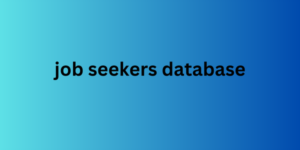As digital transformations have evolved, the marketing funnel has also evolved. Traditional marketing strategies and models no longer fully meet the changing consumer needs and do not allow us to create an effective strategy. However, I still encounter many sources that are based on the traditional model. We must follow the changing digital marketing trends and adapt these trends to our digital marketing strategies. Therefore, first of all, I will briefly talk about the development stages of the marketing funnel from past to present. Because before creating a strategy on the funnel, we need to understand what the concept of the marketing funnel means and its historical development.
1) Traditional Marketing Funnel Model
Elias St. Elmo Lewis, an American advertiser, developed the idea of a marketing funnel in 1898. He created the marketing funnel, known as the AIDA (attention, interest, desire, action) model, by dividing the customer's purchasing journey into different segments.
In the first step, which is to attract attention / create awareness (attention), we establish our first point of contact with the potential customer. At this stage, where they become aware of our product or service and our brand, we want to attract the attention of our potential customers. We create brand awareness and ensure that they connect with our products or services.
At the interest stage, our potential customers begin to be interested in our products or services and do research about them.
At the desire stage, our potential customers establish an emotional bond with our brand and move from the liking stage to the purchasing stage.
In the last stage, the action stage, our potential customer reaches the end of the funnel and becomes our customer by purchasing our products or services.
Image Source: Hubspot
Although this model taught in Marketing 101 classes is still valid, there have been changes in the customer journey with digitalization. Modern marketing funnels have emerged in its place.
2) Modern Marketing Funnel Models
As the digital world we live in and consumer behaviors changed, marketers realized over time that the marketing funnel did not end with the purchase stage, and a need for new models emerged. The interaction with customers should not end after the purchase. It should not be a funnel that progresses linearly, and there could be entries and job seekers database exits in each stage, and these stages needed to constantly evolve. At the same time, consumers no longer wanted to make an effort to understand brands, but wanted brands to understand them. That's why the traditional model evolved into new models.

Now, with the individualization of consumers and digitalization, many companies have created their own marketing funnel models. Although they may seem different, they all basically emphasized the post-purchase journey and aimed to turn customers into loyal customers.
If I were to talk about a few different models;
While other models think of the customer as an outcome, Hubspot’s Flywheel model thinks about how customers can help our business grow and doesn’t leave them at the outcome stage, turning them into brand advocates.
Image Source: Hubspot
Moz’s model consists of TOFU, BOFU and MOFU stages and focuses on getting customers to return and make repeat purchases rather than brand advocates.
Bizible’s Pipeline Marketing Funnel tries to highlight all stages and includes the terms MQL (Marketing Qualified Lead) and SQL (Sales Qualified Lead) in the model. MQL is defined as qualified leads that are more likely to become customers than other leads that the sales team may follow up on. SQL, on the other hand, refers to a potential lead that is ready to move on to the purchase stage. In other words, MQLs turn into SQLs when they are ready to talk to the sales team. This model, which is suitable for B2B marketing, also focuses on revenue growth.
Image Source: Bizible
Campaign Monitor’s non-linear, lifecycle-focused model argues that we will create a lasting brand success strategy by transforming our customers into brand advocates through an omnichannel experience. According to this model, customers can enter and exit at any stage of the funnel.
